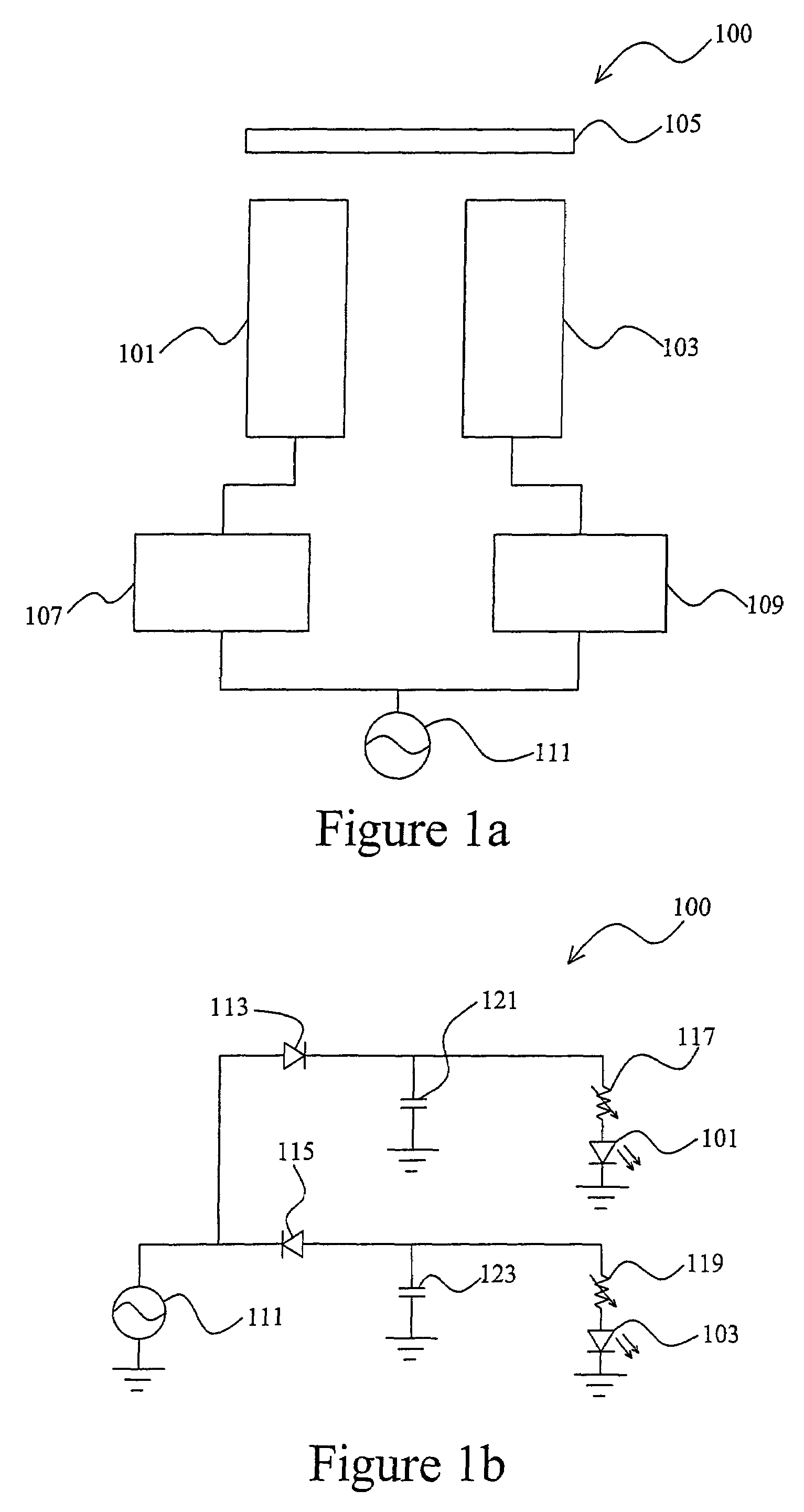Light emitting device with at least two alternately driven light emitting diodes
a light emitting diode and light emitting technology, applied in semiconductor devices, electric lighting sources, electric light sources, etc., can solve the problems of higher energy consumption and inherently less efficient use of phosphor materials in the production of white light, and achieve the effect of improving energy consumption characters
- Summary
- Abstract
- Description
- Claims
- Application Information
AI Technical Summary
Benefits of technology
Problems solved by technology
Method used
Image
Examples
Embodiment Construction
[0050]FIG. 1a illustrate an exemplary light emitting device embodiment 100 of the present invention. The light emitting device 100 has a pair of light emitting diodes (LED) 101, 103 emitting blue and amber light emissions respectively. The LEDs 101, 103 are placed in close proximity such that the blue and amber light emissions combine to produce a light of a different color, preferably but not limited to white light, in the human vision after a mixing length from the LEDs. A diffuser 105 can be placed on the light path of the lights from the LEDs for reducing the mixing length.
[0051]An alternating current power source 111, connected to the LEDs 101, 103 via a pair of driving circuit 107, 109 respectively, alternately drives the blue and amber LEDs 101, 103 such that in the time domain, each LED 101, 103 alternately emits light emissions. Due to the persistence of vision, when the frequency of the AC power signals is sufficiently high, for example, higher than 25 Hz, the discontinuou...
PUM
 Login to View More
Login to View More Abstract
Description
Claims
Application Information
 Login to View More
Login to View More - R&D
- Intellectual Property
- Life Sciences
- Materials
- Tech Scout
- Unparalleled Data Quality
- Higher Quality Content
- 60% Fewer Hallucinations
Browse by: Latest US Patents, China's latest patents, Technical Efficacy Thesaurus, Application Domain, Technology Topic, Popular Technical Reports.
© 2025 PatSnap. All rights reserved.Legal|Privacy policy|Modern Slavery Act Transparency Statement|Sitemap|About US| Contact US: help@patsnap.com



